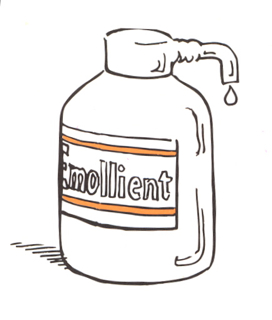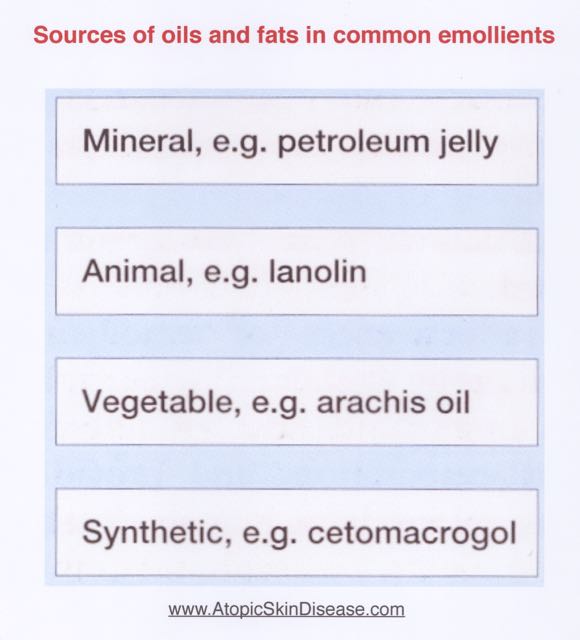Friday Facts #5 What is in an emollient?

What is in an emollient?
Emollient therapy for dry skin is important for both moisturising and lubricating, enabling a return to healthy flexibility, resilience and strength.
The main ingredients of all emollients are oils or fats that take the place of deficiencies in natural skin oils that are needed for healthy skin function: see how emollients work.
The oils and fats that are used in emollients come from a variety of sources:

The thickness of an emollient - whether it is a cream or an ointment - depends on how much water is included in the preparation. Creams have more water than ointments.
Fragrances are added to some emollients to make their use more pleasant, and preservatives are added to some to increase their shelf life. Creams are more likely to require preservatives.
Some emollients also include other added ingredients aimed at increasing water absorption, water penetration, and making good structural deficits that seem to contribute to skin drying.
The same oils and fats are used to make the base creams and ointments that also carry in them (they are therefore also called vehicles) the special and specific medicines used in all topical skin treatments, including topical steroids for example.
To read more about the basics of emollients and how they work, see Emollient Therapy in our book Atopic Skin Disease.
See also...
Emollients
Topical Tip #1 Apply emollient sparingly
Topical Tip #2 Soap substitutes
Topical Tip #3 Convenient quantities of emollient
Topical Tip #4 Lotion, cream or ointment?
Topical Tip #5 The use of creams and ointments
Topical Tip #6 Moisturizing children
